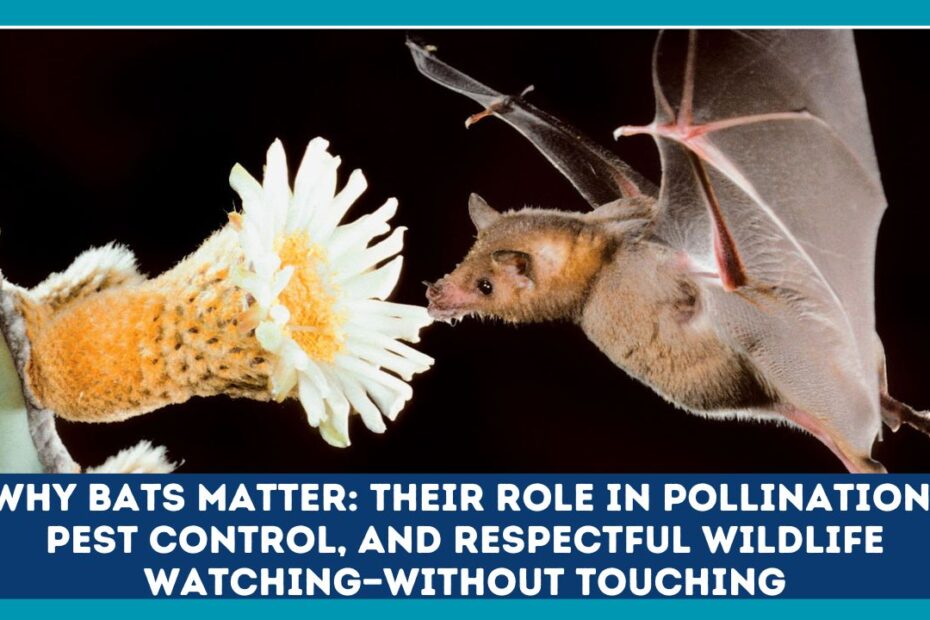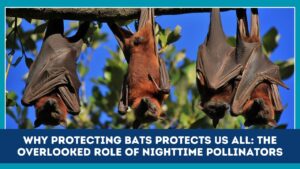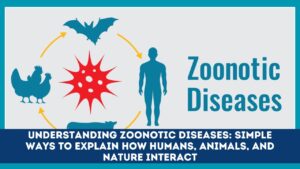Bats are often misunderstood creatures of the night, yet they play essential ecological roles—from pollination and pest control to seed dispersal.
In this article, discover how these nocturnal mammals contribute billions of dollars worth of ecosystem services, support global food chains, and how to observe them respectfully without touching, ensuring both their safety and ours.
Bats as Pollinators
- Over 500 plant species rely on bats for pollination, including mango, banana, durian, guava, agave. Flowers open at night specifically for bat pollinators.
- The cave nectar bat (Eonycteris spelaea) pollinates up to 55 plant species, such as durian, banana, jackfruit—crucial for both ecology and agriculture.
- Flying foxes (megabats) are vital for pollination of durian and other tropical plants, helping maintain forest regeneration.
Bats as Pest Controllers
- Approximately 70% of bat species are insectivorous, devouring thousands of pests nightly, including mosquitoes, moths, beetles, leafhoppers, crickets.
- In the U.S., bats provide more than US$3 billion annually in savings from reduced crop damage and pesticide costs. Corn alone sees over US$1 billion in savings.
- Bats’ presence alone can suppress pest activity, even when not actively feeding.
Bats as Seed Dispersers & Forest Rejuvenators
- Fruit-eating bats disperse seeds over long distances, aiding forest regeneration, especially after deforestation.
- In tropical regions, some bats account for up to 95% of seed dispersal for young rainforest growth.
- Flying foxes enhance germination: fig seeds in Madagascar germinate better after passing through bat digestive systems.
Economic & Human Health Impacts
- The pest-control value of bats globally is estimated between US$3 billion to as high as US$53 billion per year.
- Declines in bat populations due to disease (e.g., white-nose syndrome) or habitat loss can lead to increased pesticide use, even linked to increased infant mortality (approx. 8%) by environmental economists.
- Bats also contribute to nutrient cycling via guano, a high-quality organic fertilizer rich in nitrogen, phosphorus, and sulfur.
Bats as Ecosystem Indicators
- Bats serve as bioindicators: changes in bat populations often signal shifts in ecosystem health and biodiversity.
- In cave ecosystems, bat guano forms the nutrient foundation—without bats, these delicate systems collapse.
- Their varied diets and habitats across the globe highlight their widespread ecological importance.
Threats to Bats
- White-nose syndrome (WNS), a fungal disease, has killed millions of bats in North America, dramatically reducing their populations and threatening species.
- Habitat destruction, climate change, and unsustainable agricultural practices—such as harvesting agave before flowering—disrupt bat food sources and genetic diversity of plants like agave.
- Misunderstanding and negative perceptions lead to persecution and neglect of their conservation needs.
Respectful Wildlife Watching: Observing Bats Without Touching
- Always maintain a safe distance; use binoculars or night-vision devices—never attempt to touch or feed bats.
- Adhere to cave and habitat closures and follow guidelines to prevent disease spread such as WNS to bat populations.
- Encourage bat houses and bat-friendly gardens with night-blooming native plants, avoiding pesticides—to attract bats naturally and observe their behaviors ethically.
- Educate others about the critical roles bats play to build awareness and support for conservation.
Key Facts & Figures
| Role | Key Facts & Figures |
|---|---|
| Pollination | >500 plant species; cave nectar bat pollinates ~55 plant species |
| Pest Control | 70% of bats eat insects; >US$3 billion/year saved in agricultural pest control in the U.S. |
| Seed Dispersal | Up to 95% of rainforest seed dispersal by fruit bats; flying foxes aid forest regrowth |
| Economic Impact | Bats worth US$3–53 billion annually; linked to human health outcomes |
| Ecosystem Health | Bats are bioindicators; bat guano sustains cave ecosystems |
| Threats | White-nose syndrome killed millions; habitat loss and agave harvesting disrupt food sources |
| Ethical Watching | Observe from distance, use bat houses, avoid touching or disturbing them |
Bats are remarkable nocturnal guardians whose contributions—from pollinating vital crops to controlling pests and dispersing seeds—impact ecosystems, agriculture, and human well-being.
Their value runs into the billions of dollars, yet they remain largely invisible to mainstream conservation attention.
Ethical wildlife watching, habitat protection, and informed public awareness are key to ensuring bats continue their vital ecological work—and that our ecosystems, economies, and health benefit for generations to come.
Frequently Asked Questions
1. Why are bats important pollinators compared to bees?
Bats pollinate over 500 plant species, especially night-blooming plants such as mango, durian, agave, and banana. Their nocturnal activity makes them uniquely essential for these species.
2. How much do bats save us in agricultural costs?
In the U.S., bats save over US$1 billion in the corn industry alone and more than US$3 billion across all agriculture by reducing pest damage and pesticide use.
3. How can I observe bats without harming them?
Maintain distance, avoid touching, follow habitat guidelines (like cave closures), install bat houses, plant night-blooming native flora, and never use pesticides—this enables safe, respectful watching.



